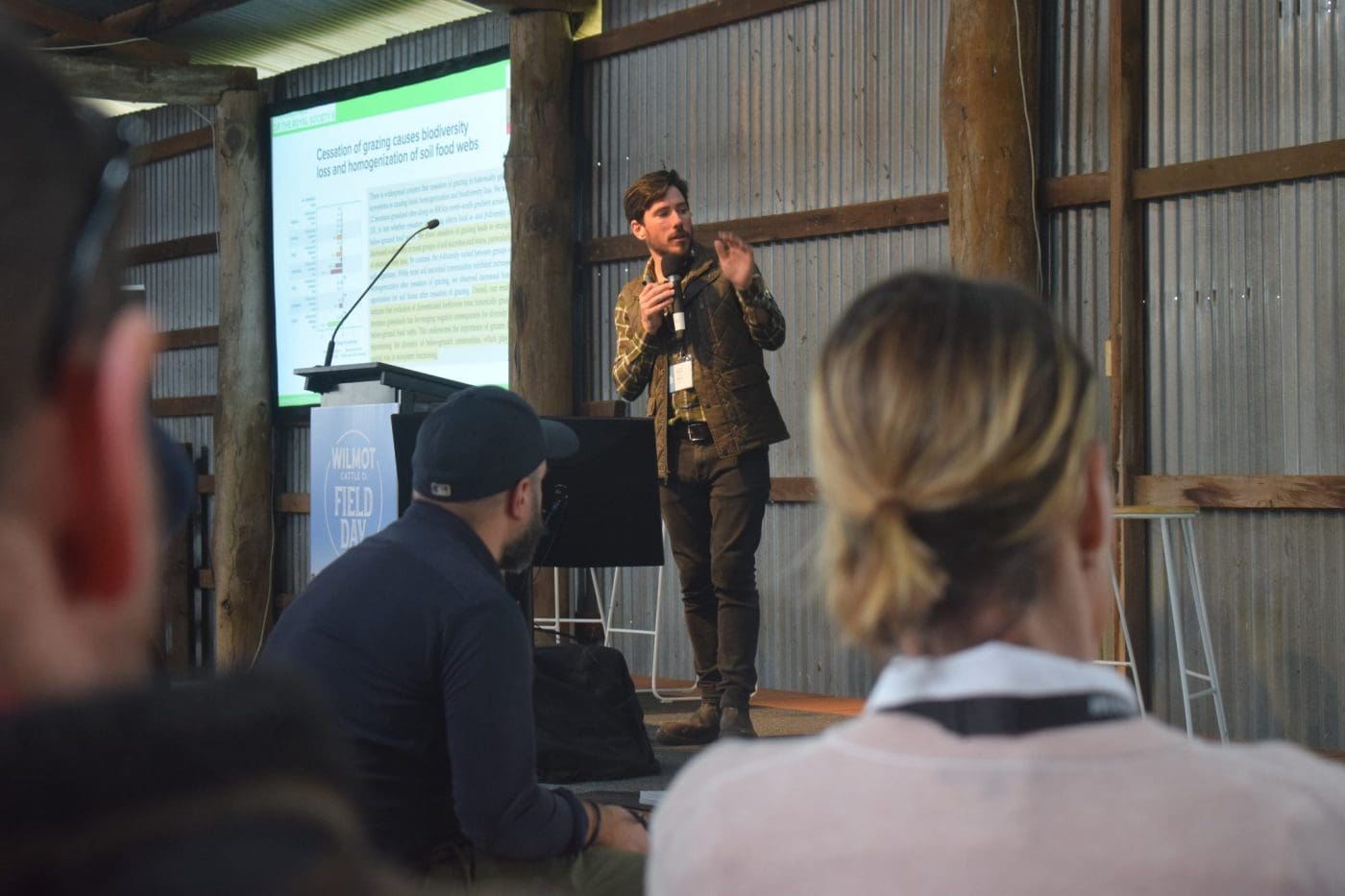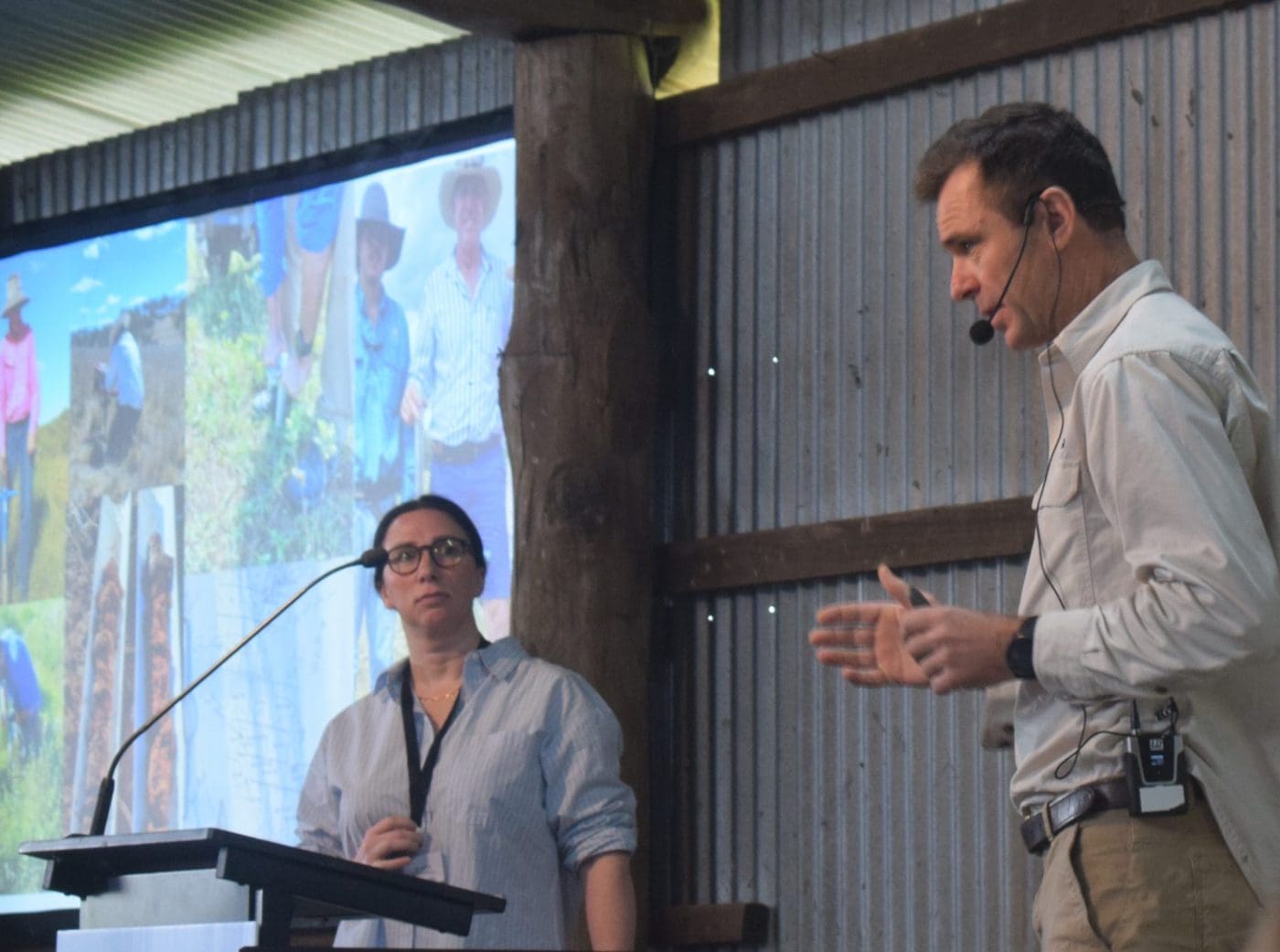AUSTRALIA’S soil carbon industry had a breakthrough year last year with credits starting to flow to projects.
Against that backdrop some thorough discussions were had this week on what is needed to start a project.
Soil carbon was a major focus yesterday on day one of a two-day field day at the Macdoch Ag Group’s northern NSW property Wilmot, which is widely known for its sale of soil carbon credits to Microsoft in 2019.
Hundreds of people travelled to the property from across the country and overseas, where speakers included Australian-raised, Canadian-based soil health educator Joel Williams.
His address kicked off proceedings with a comprehensive analysis of the different elements that make up soil carbon, why it has depleted in places and what is needed to build it up.
Getting to the roots of the matter
He said a fundamental change in thinking was needed to build soil carbon – going from a focus on above ground biomass to below ground biomass.
“Roots are directly driving the formation of soil carbon much more than what is going on above ground – that is key message number one,” Mr Williams said.
Establishing perennial pastures is one of the main focuses of a lot of soil carbon projects, which Mr Williams said was a fundamental change from the direction agriculture has taken over the past 50 years.
“We have taken a lot of perennial systems and gone down the annual route and annual plants produce a lot less roots than perennials. Perennials will be back next year so they invest more heavily in roots to have the reserves to come back – annuals are more focused on seed production,” he said.
“With breeding plants for productivity or high yield and the process of selecting for above ground biomass it has come at a trade-off to below ground biomass. The other factor is nitrogen fertilizer, which is great for increasing yield and above ground biomass, but not necessarily for root biomass.”
Carbon project not one decision, ‘it is 1000 decisions’
MacDoch Ag launched its own carbon project developer Atlas Carbon at last year’s Wilmot field day.
Atlas Carbon chief grazing officer Bart Davidson said there were a lot of considerations to make when starting a soil carbon project.
It involved consistent input from the producer, he said.
“A carbon project is not one decision, it is 1000 decisions, and it should be factored in every time you make a call on how you move animals, stocking densities and planting,” Mr Davidson said.
“The hardest thing with a carbon project is keeping the carbon through the tough times, it quite often involves some tough conversations about having some sacrosanct rules with groundcover and pulling the trigger on selling stock.”
Tempering expectations with soil carbon
Last year was a breakthrough year for the soil carbon industry, with several projects receiving Australian Carbon Credit Units after a seven-year wait.
Some of those projects generated large numbers of ACCUs that are now worth millions-of-dollars.
Soil scientist and founder of carbon accounting consultancy Ecometric Dr Elaine Mitchell said some of the reported sequestration rates from the recent issuance were very high and it was important for new entrants to soil carbon farming to temper expectations.
“Soil carbon farming is often measured in tonnes/hectare/year and it is usually on a sliding scale from 0.1 to 2.3t/ha/year,” Dr Mitchell said.
“My assessment of the science as it currently sits is that people should be making decisions based on the lower end of that scale.”
Dr Mitchell said some of the long-term studies of soil carbon sequestration had demonstrated lower sequestration rates from 0.35t/ha to 0.5t/ha.
“Where we have seen higher rates of sequestration measured in Australia was a study done over a short time period, of five years, in New South Wales,” she said.
“It was done on a conversion of cropping to pasture, where you have soils depleted of carbon and you are going to higher rate of gain in the initial phase. So, I don’t think you take that short term study and say, ‘this is what we expect in the long-term’ – and by long-term I mean the 25-year life of the project.
“But it is also important to mention that scientists don’t have all the answers and we don’t actually know the timeframe it which things will start to level out.”
With that in mind, Mr Davidson said it was important producers looked at the risk/reward scenario of a soil carbon project because sometimes the lower rates of sequestration can work economically.
“But in a lot of cases the sequestration rate doesn’t matter, what really matters is whether it improves your operation and provides a risk/reward ratio you are comfortable with.
“You might get 0.2-0.3t, which is pretty achievable, and at it only costs you the equivalent of 0.05t then it is worth talking about. Other times is might cost more the sequester the carbon and it becomes a problem.”





HAVE YOUR SAY